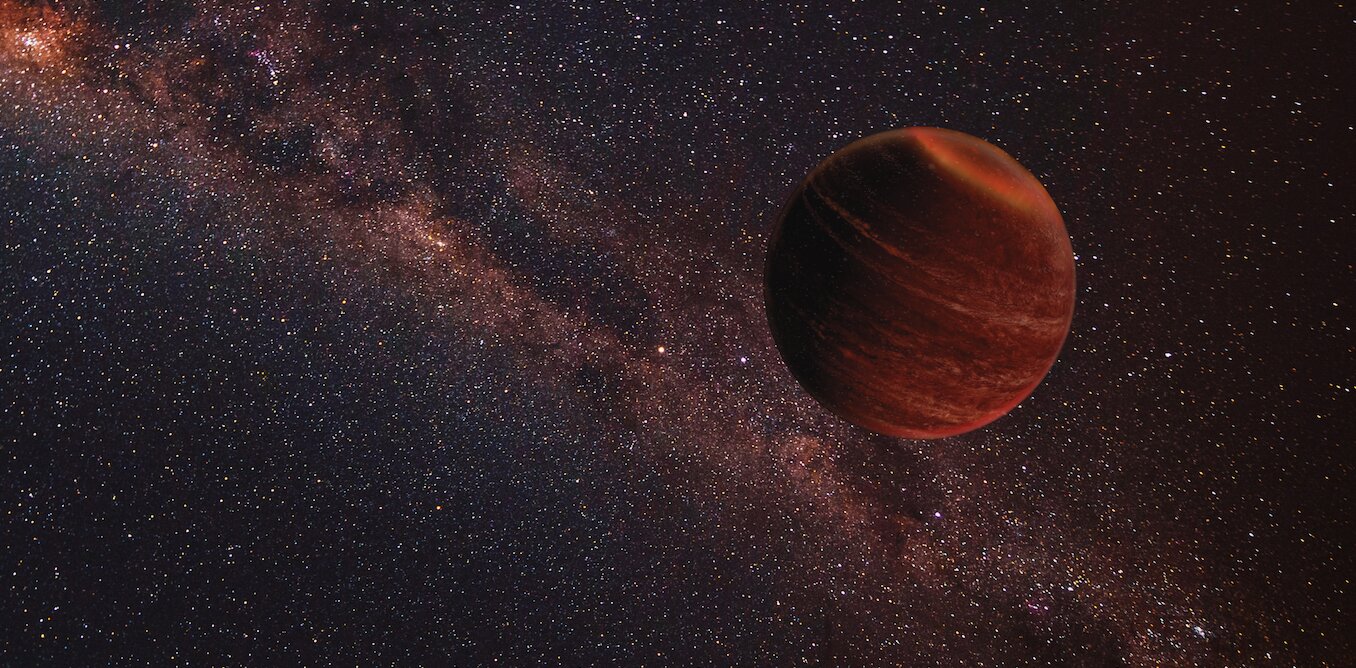We have made a groundbreaking discovery of the coldest star ever known to emit radio waves. This star, called WISE J0623, is a brown dwarf that is too small to be classified as a regular star and too large to be considered a planet. Our findings have been published in the Astrophysical Journal Letters. Despite being similar in size to Jupiter, this dwarf star has a much more powerful magnetic field than our Sun. It belongs to a rare group of ultra-cool dwarfs that produce repeating radio bursts.
It may surprise you to learn that out of the over 100 billion stars in our Milky Way galaxy, less than 1,000 of them have been found to emit radio waves. One reason for this is that radio waves and optical light are generated through different processes. Unlike the thermal radiation emitted by the hot outer layer of a star, radio emission occurs when electrons accelerate and interact with magnetized gas surrounding the star. This radio emission provides valuable insights into the atmospheres and magnetic fields of stars, which can help us better understand the potential for life on any planets orbiting them.
In the past few decades, most of the stars detected with radio telescopes were highly active stars experiencing flares or energetic bursts resulting from interactions in binary star systems. However, advancements in sensitivity and coverage of new radio telescopes have enabled the detection of less luminous stars like cool brown dwarfs. WISE J0623 has a temperature of approximately 700 Kelvin, which is equivalent to about 420℃ or the temperature of a commercial pizza oven. While this may be hot from a human perspective, it is considered cold for a star. The lack of significant atmospheric activity in these cool brown dwarfs makes them more challenging to identify for radio astronomers.
Our discovery was made possible through the Australian SKA Pathfinder radio telescope located in Western Australia. This telescope, equipped with an array of 36 antennas, provided a comprehensive survey of nearly 90% of the sky. From this survey, we identified millions of radio sources, most of which were active galactic nuclei. To distinguish radio stars from these sources, we looked for circularly polarized radio emission. Stars and pulsars are the only astronomical objects known to emit a significant amount of circularly polarized light. By selecting highly circularly polarized radio sources from a previous survey, we were able to identify WISE J0623 as the coldest radio star.
To investigate the radio emission further, we conducted follow-up observations using CSIRO’s Australian Telescope Compact Array and the MeerKAT telescope. These observations revealed that WISE J0623 produced two bright, circularly polarized bursts every 1.9 hours, followed by a half-hour interval before the next pair of bursts. This star is the coldest brown dwarf ever detected emitting radio waves, and it is the first known case of persistent radio pulsations. Using similar search methods, we anticipate that future surveys will identify even colder brown dwarfs. Research on these dwarf stars will enhance our understanding of stellar evolution and the development of magnetic fields in giant exoplanets.
In conclusion, our discovery of the coldest star emitting radio waves provides valuable insights into the characteristics and behavior of these unique objects. This research has significant implications for our understanding of the universe and the potential for extraterrestrial life.

